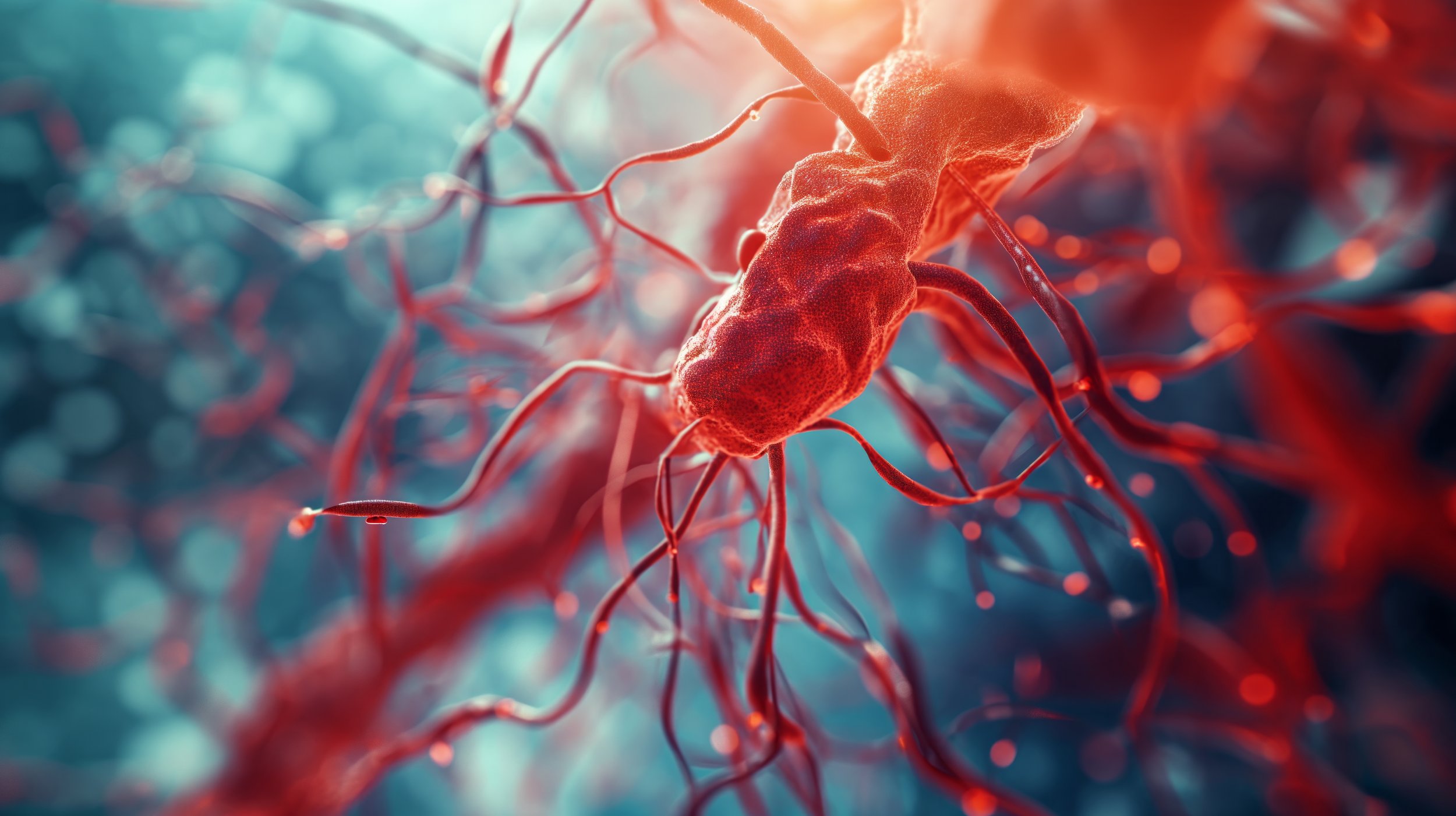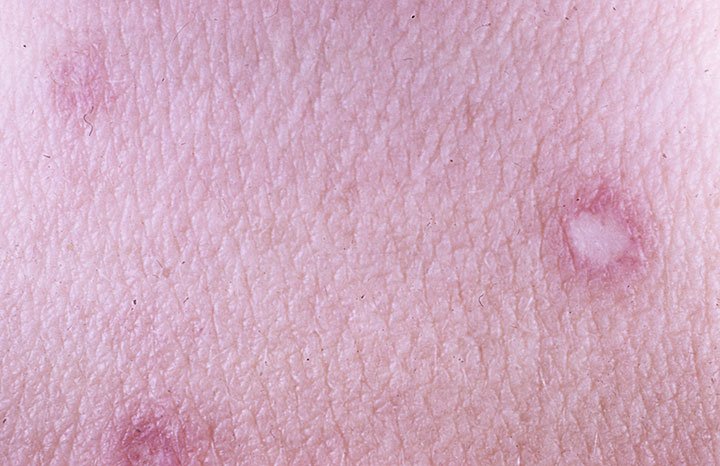
What is Degos Disease?
Degos disease almost always presents with skin lesions with a very distinct appearance, a porcelain-white center with a red rim consisting of clusters of blood vessels.
The information provided on this website is designed to support, not replace, the relationship that exists between a patient/site visitor and their physician.
Degos disease, also known as Malignant Atrophic Papulosis (MAP), Atrophic Papulosis, or Kohlmeier-Degos disease is an “ultra-rare” disease which can exist in a benign, cutaneous (skin only) or systemic form.
But, Degos disease can affect any age group.
The systemic form of Degos disease affects one or more body organs, most commonly the gastrointestinal tract or brain. Complications can include bowel perforation and a variety of neurologic and visual symptoms.
For patients where skin lesions are missed or not noted, no diagnosis or a misdiagnosis is common, which could lead to delays or mistakes in treatment. For those with systemic disease, serious complications could happen fast and even lead to death.
We have developed a tool to help patients talk to their physicians and hopefully result in an earlier diagnosis. Dive into our path to diagnosis infographic to unravel the mystery!
What is cutaneous Degos disease and how is it identified?
Cutaneous Degos disease involves the skin-only, consisting of lesions.
Degos disease almost always presents with skin lesions with a very distinct appearance, a porcelain-white center with the main feature of Degos lesions being a red rim consisting of clusters of blood vessels.
The lesions do not commonly cause pain and typically appear on the hands or on areas of the chest, abdomen, pelvis and back. There may be several or only a few. Due to the painless nature of the skin lesions, it is critical they are evaluated in a timely manner.
Refer to Gastrointestinal Kohlmeier–Degos disease: a narrative review for images of the lesions.
Routine follow-up visits with your primary doctor are necessary as systemic disease can develop.
What is systemic Degos disease and how is it identified?
The first sign of systemic involvement is severe abdominal pain due to affected intestines, commonly the small intestine.
It is critical a laparoscopy is performed if experiencing abdominal pain.The surgeon performing the laparoscopy should familiarize themselves with the appearance of the bowel lesions before the procedure. Refer to Gastrointestinal Kohlmeier–Degos disease: a narrative review for images of the lesions.
Also see the laparoscopy training video here.
Routine follow-up visits with your primary doctor are necessary. Clinical workup recommendations are stated in Malignant atrophic papulosis (Köhlmeier-Degos disease) - A review.
What Are Rare Diseases & Disorders?
Rare diseases and disorders, are infrequent, poorly understood, and often lack adequate diagnosis, therapy, and treatments.
They typically require specialist and continuous assistance, necessitating major public investment. An exact, universally accepted definition of a rare disease does not exist.
In the United States, a rare disease or disorder is classified as one that affects
people at any given time, according to the Orphan Drug Act of 1983.
In Europe, a rare disease or disorder is defined as one that affects fewer than
people, according to the European Medicines Agency (EMA).
There are various “lists” of rare diseases/disorders globally, each corresponding to the reference definition or specific interests of the association or working group that produced it.
How Many Rare Diseases & Disorders Are There?
The number of known rare diseases/disorders is continually growing as medical science advances.
They affect both children and adults and can occur at any stage of life. Many disorders are chronic, progressive, and disabling, and some are life-threatening.
In the United States, it’s estimated there are between
rare diseases and disorders, according to the National Organization for Rare Disorders (NORD) and the National Institutes of Health (NIH) Office of Rare Diseases.
Worldwide, people affected by rare diseases and disorders is estimated to only be
of the world’s population, which is approximately 300 million people. Individually, rare diseases and disorders affect relatively few people.
However, collectively, the number of people affected by rare diseases and disorders is significant.
Although the number of people affected by rare disease and disorders is only slightly fewer than those affected by heart disease (approximately 523 million worldwide), heart disease has been identified as a public health priority with substantial funds allocated for research and prevention.
In contrast, rare diseases and disorders do not receive the same level of attention on the public health agenda.
Get in Touch
Feeling lost or in need of assistance? We’re here to support you! Don't hesitate to reach out to us today.
Support Us
With your support, we're making groundbreaking research happen. Explore our events page or make a donation!
References
Sattler, S.S., Magro, C.M., Shapiro, L. et al. Gastrointestinal Kohlmeier–Degos disease: a narrative review. Orphanet J Rare Dis 17, 172 (2022). https://doi.org/10.1186/s13023-022-02322-9
Theodoridis, A., Makrantonaki, E., & Zouboulis, C. C. (2013). Malignant atrophic papulosis (Köhlmeier-Degos disease) - a review. Orphanet journal of rare diseases, 8, 10. https://doi.org/10.1186/1750-1172-8-10






















